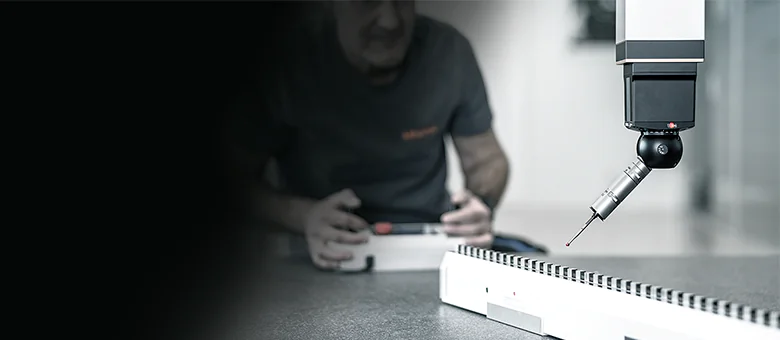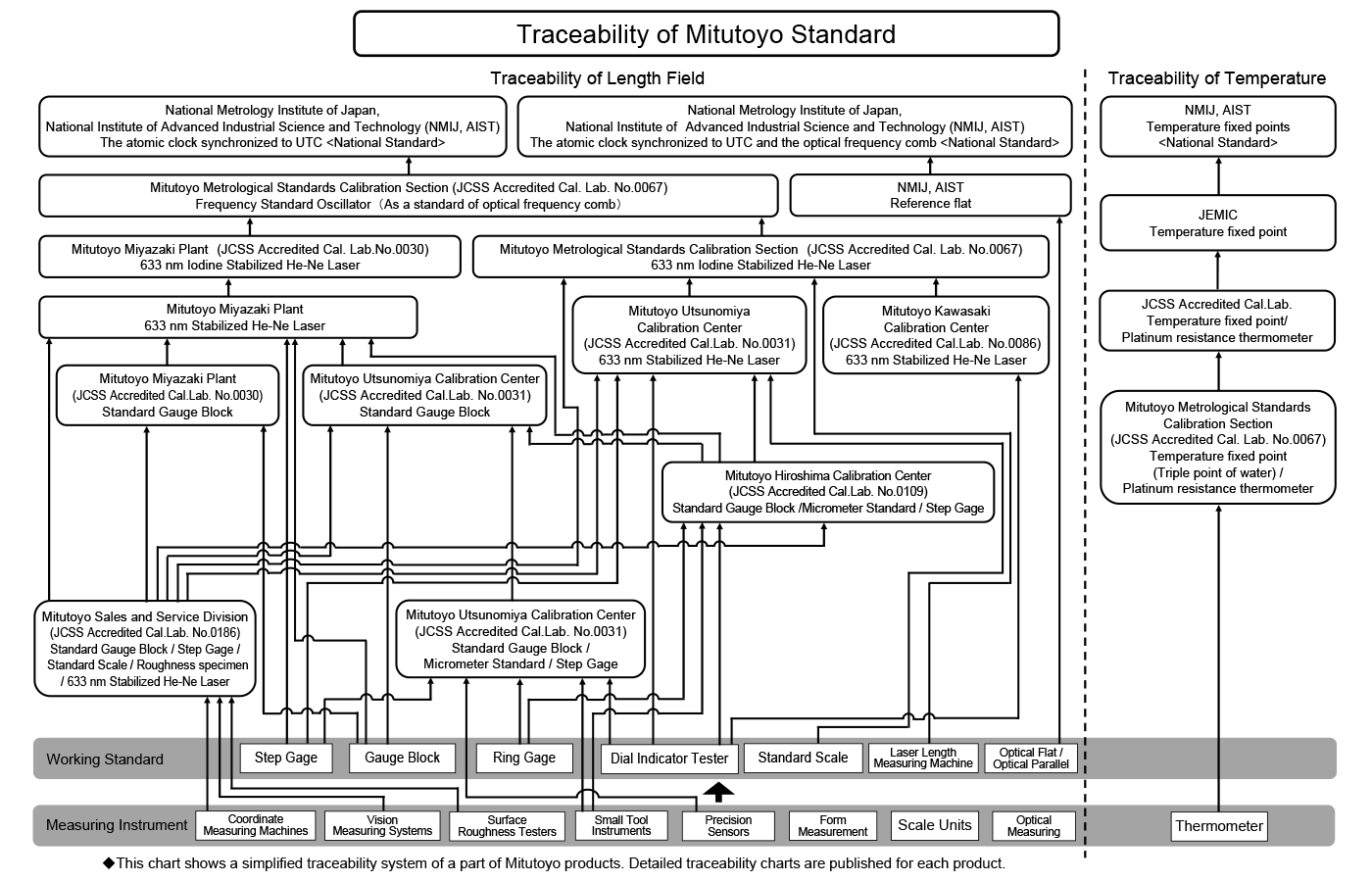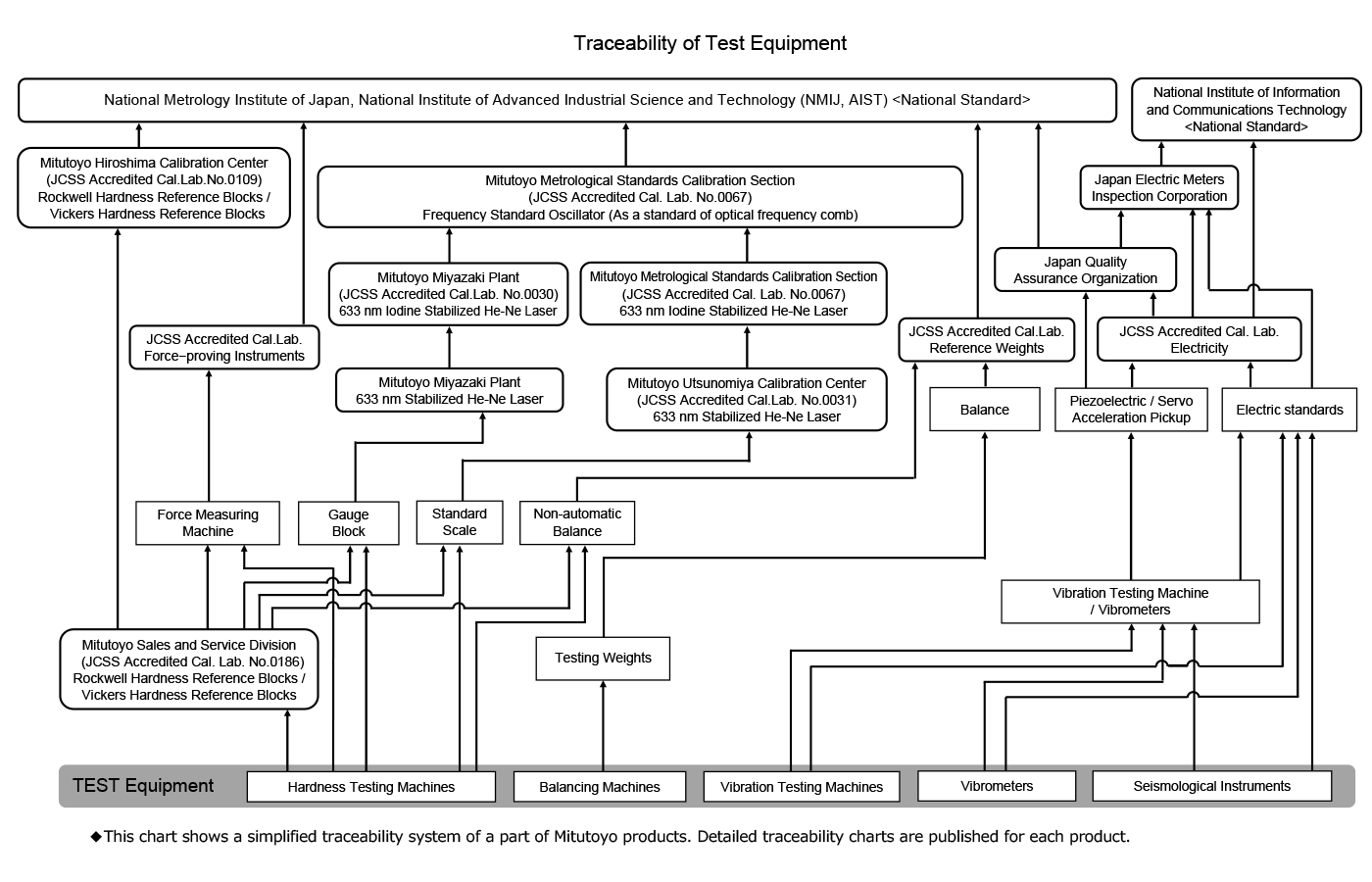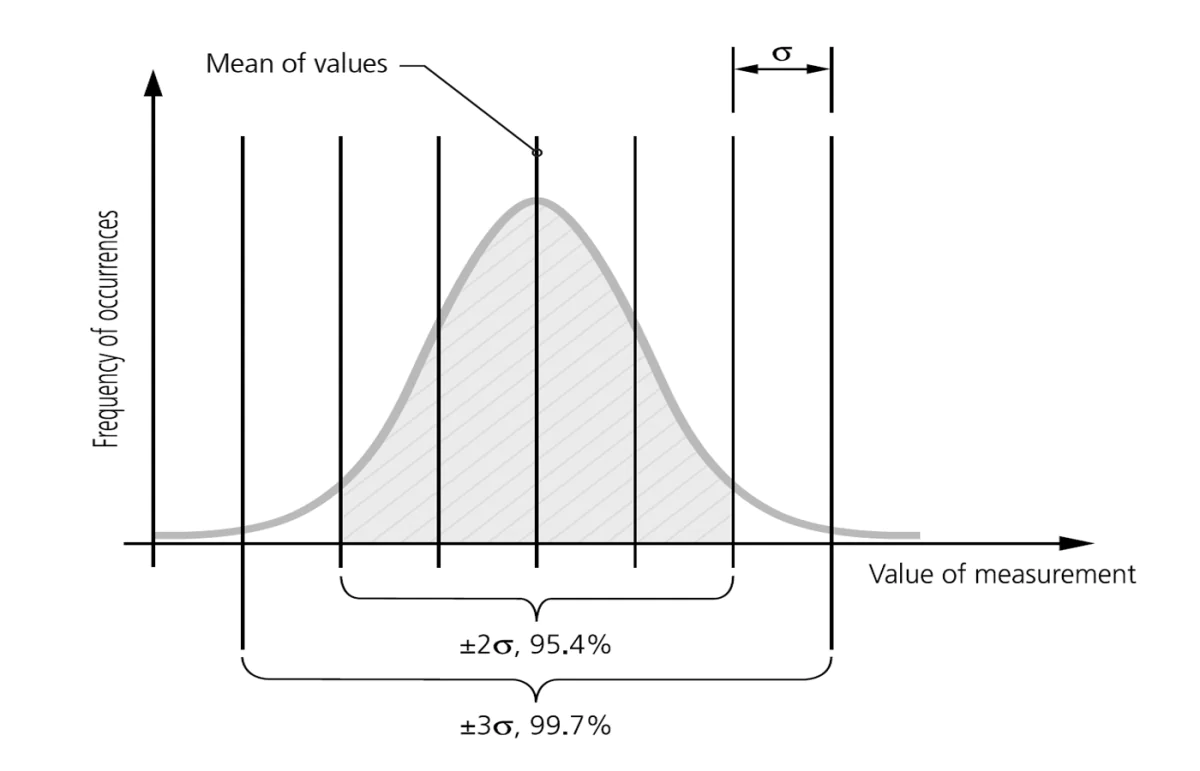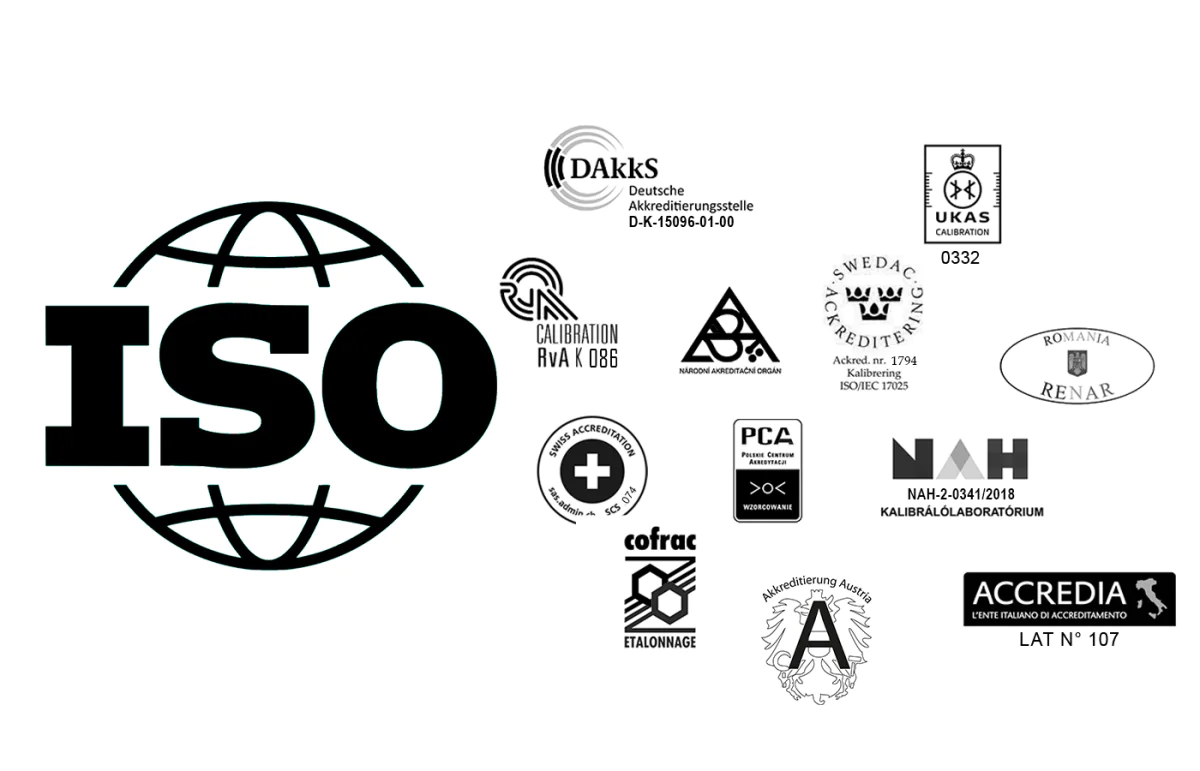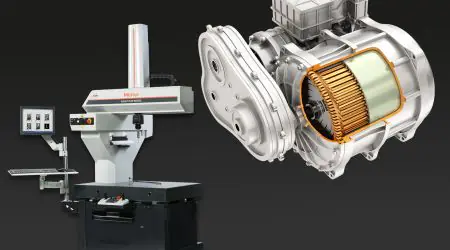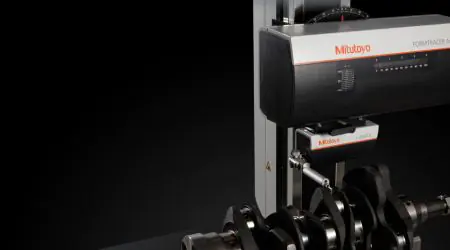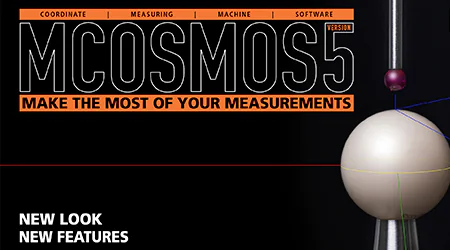- Nederlands, Belgique / België
- Česky, Česká republika
- Deutsch, Deutschland
- Español, España
- Português, Portugal
- English, Europe
- Français, France
- Italiano, Italia
- Magyar, Magyarország
- Nederlands, Nederland
- Deutsch, Österreich
- Polski, Polska
- Română, România
- Suisse / Schweiz / Svizzera
- Svenska, Sverige
- Suomeksi, Suomi
- Türkçe, Türkiye
- English, United Kingdom
- Slovenská, Slovak
-
Worldwide
- Kaikki: Poimintoja tuotteistamme
- SJ-220
- LEGEX Takumi
- QuantuMike
- STRATO-Active
- Crysta-Apex V
- MCOSMOS v5
- Formtracer Avant
- Measurlink® v10
- HR-600 -sarja
- MiSTAR 555
- QuickVision Pro
- TAGLENS
- Profiiliprojektori PJ Plus
- Kaikki: Tuotteita toimialoittain
- Ilmailuteollisuus
- Lääketeollisuus
- Autoteollisuus
- Energiateollisuus
- Valmistava teollisuus
- Elektroniikkateollisuus
- Asiakaskertomukset
- Kaikki: Käsimittalaitteet
- Työntömitat
- Mikrometrit & rakennemikrometrit
- Sisämittalaitteet
- Syvyysmittalaitteet
- Korkeusmittalaitteet
- Mittakellot & pikamittalaitteet
- Apuvälineet & tarvikkeet
- Kalibrointilaitteet
- Mittapalat
- Kaikki: Koordinaattimittauskoneet
- Pienet & keskikokoiset CMM:t
- Tuotantotilojen ja -linjojen CMM:t
- Suuret CMM:t
- Pyöröpöydät CMM
- Mittausanturit CMM
- Mittauskärjet
- Kiinnitinjärjestelmät
- Suojarakenteet CMM
- Mittausohjelmistot CMM
- Kaikki: Videomittauskoneet
- Manuaalitoimiset 2D-videomittauskoneet
- Manuaalitoimiset videomittauskoneet
- CNC-toimiset 3D-videomittauskoneet
- CNC-toimiset 3D-videomittauskoneet anturijärjestelmillä
- MiSCAN-videomittauskoneet
- CNC-toimiset 3D-videomittauskoneet mikrogeometrioille
- Videomittauskoneiden ohjelmistot
- Videomittauskoneiden lisävarusteet
- Kaikki: Optiset mittauslaitteet
- Luupit
- Profiiliprojektorit
- Mittausmikroskoopit
- Mikroskooppiyksiköt
- Objektiivilinssit
- TAGLENS
- Valonlähteet
- Kaikki: Muodonmittauskoneet
- Pinnankarheuden mittauslaitteet
- Muodonmittauskoneet
- Yhdistelmäkoneet pinnankarheus ja muodonmittaus
- Ympyrämäisyydenmittauskoneet
- Ohjelmistot FMI-koneille
- Kaikki: Kovuudenmittauskoneet
- Kannettavat mallit
- Yhdistelmälaitteet
- Vickers-mittauskoneet
- Automaattiset Vickers-mittauskoneet
- Micro-Vickersin mittauskoneet
- Kovuudenmittauskoneiden ohjelmistot
- Referenssipalat ja painimet
- Kaikki: Anturijärjestelmät
- Lineaarianturit
- Matalan mittausvoiman anturit
- Liityntä- ja väyläkomponentit
- Laser Scan Mikrometrit
- Surface Measure - SM1008S
- Ohjelmisto anturien hallintaan
- Kaikki: Pituudenmittausjärjestelmät
- DRO-pituudenmittausjärjestelmät Linear Scales & näyttöyksiköt
- NC-koneisiin Linear Scale -ratkaisut
- Rakennetyöntömitat ja mitta-asteikot
- Työntömitat
- Digitaaliset työntömitat
- Työntömitat erityistarkoituksiin
- Analogiset työntömitat
- Työntömittojen varusteet
- Mikrometrit & rakennemikrometrit
- Digitaaliset ja mekaaniset mikrometrit
- Mikrometrien varusteet
- Rakennemikrometrit
- Rakennemikrometrien varusteet
- Sisämittalaitteet
- Sisämikrometrit
- Sisämittalaitteet
- Sisämikrometrien & sisämittalaitteiden varusteet
- Syvyysmittalaitteet
- Syvyysmikrometrit
- Syvyystyöntömitat ja -mittalaitteet
- Syvyystyöntömittojen varusteet
- Korkeusmittalaitteet
- Korkeusmittalaitteet näyttöyksiköillä
- Korkeusmittalaitteet
- Korkeusmittalaitteiden varusteet
- Mittakellot & pikamittalaitteet
- Digitaaliset mittakellot
- Mittakellojen varusteet
- Analogiset vipumittakellot
- Analogiset mittakellot
- Mittakellojen varusteet
- Pikamittakellot ja paksuudenmittauslaitteet
- Mittapalat
- Mittapalasarjat teräksestä
- Mittapalat teräksestä
- Keraamiset mittapalasarjat
- Keraamiset mittapalat
- Erikoismittapalat
- Mittapalojen varusteet
- Pienet & keskikokoiset CMM:t
- CRYSTA-Apex V - 500, 700, & 900 mallisarja
- CRYSTA-Apex V - 1200, 1600 & 2000 mallisarja
- CRYSTA-Apex EX mallisarja REVO-teknologialle
- STRATO-Active mallisarja
- STRATO-Apex - 500, 700, & 900 mallisarja
- STRATO-Apex - 1600 mallisarja
- LEGEX mallisarja
- Mittauskärjet
- Mittakärkisarjat
- Suorat mittakärjet
- Timanttipinnoitetut mittakärjet
- Kalibrointikuula
- Työstökoneiden mittakärjet
- Ristikkokärjet
- Vaihdettavat ristikkokärjet
- Lieriömittakärjet
- Lautasmittakärjet
- Mittakärki - Tip Styli
- Mittakärkien jatkot
- Mittakärkien keskiöt
- Mittakärkien adapterit
- Mittakärkien nivelletyt adapterit
- Keskiöiden ruuvit
- Työkalut
- Mittakärkien puhdistusasema - StyliCleaner
- Kiinnitinjärjestelmät
- Kiinnitinsarjat
- Pohjalevyt
- Rakennuskomponentit
- Paikoituskomponentit
- Profiilikomponentit
- Peruskomponentit
- Kiinnityskomponentit
- Adapterit
- Säätökomponentit
- Vaihtoasemat
- CNC-toimiset 3D-videomittauskoneet
- Quick Vision ACTIVE
- Quick Vision APEX / HYPER
- Quick Vision ACCEL
- Quick Vision ULTRA
- Profiiliprojektorit
- PJ-sarja
- PV-sarja
- PH-sarja
- M2-ohjelmisto
- Mittausdatan hallintayksikkö
- Reunantunnistusanturi
- Lisävarusteet
- Mittausmikroskoopit
- TM-sarja
- MF-sarja
- MF-U -sarja
- Valonlähteet
- Hyper MF-sarja
- Vision Unit -kamera
- M2-ohjelmisto
- QSPAK-VUE -ohjelmisto
- Objektiivilinssit
- ML-objektiivit
- Brightfield-objektiivit
- Brightfield/Darkfield -objektiivit
- NIR-objektiivit
- NIR LCD -objektiivit
- NUV-objektiivit
- NUV LCD -objektiivit
- UV-objektiivit
- UV LCD -objektiivit
- Pinnankarheuden mittauslaitteet
- Surftest SJ-210
- Surftest SJ-310
- Surftest SJ-410
- Surftest SJ-500
- Surftest SV-2100
- Surftest SJ-500P
- Surftest SV-2100P
- Formtracer Avant FTA-S3000
- Surftest Extreme SV-3000CNC
- Surftest Extreme SV-M3000CNC
- Yhdistelmäkoneet pinnankarheus ja muodonmittaus
- Formtracer Avant FTA-D3000 / FTA-D4000
- Formtracer CS-3300
- Formtracer Extreme SV-C4500CNC
- Formtracer Extreme SV-C4500CNC HYBRID Type 1
- Formtracer Extreme CS-5000CNC & CS-H5000CNC
- Yhdistelmälaitteet
- Rockwell HR-200/300/400
- Rockwell, Rockwell Superficial, Brinell Hardness Tester HR-530 & HR-600
- Automaattiset Rockwellin mittauskoneet HR-600
- Automaattiset Vickers-mittauskoneet
- Automaattiset Micro-Vickersin mittauskoneet
- Automaattiset Vickersin mittauskoneet
- Lineaarianturit
- ABSOLUTE Digimatic Linear Gauge LGS-sarja
- Paineilmatoimiset nostimet
- Linear Gauge LGF-sarja
- Linear Gauge LG100-sarja
- Linear Gauge LG200 Series
- Linear Gauge LG-sarja
- Laser Hologauge
- Liityntä- ja väyläkomponentit
- EJ-liityntäyksikkö ja väyläkomponentit lineaariantureille
- EC-liityntäyksikkö lineaariantureille
- EG-liityntäyksikkö lineaariantureille
- EB-liityntäyksikkö lineaariantureille
- EH-liityntäyksikkö lineaariantureille
- EV-liityntäyksikkö lineaariantureille
- Näyttöyksikkö EV-liityntäyksikölle
- Laser Scan Mikrometrit
- Laser Scan Mikrometerien mittausyksiköt ja liityntäyksiköt
- Laser Scan Mikrometerien mittausyksiköt
- Laser Scan Mikrometerit
- Laser Scan Mikrometerien näyttöyksiköt
- Laser Scan Mikrometrien lisävarusteet
- DRO-pituudenmittausjärjestelmät Linear Scales & näyttöyksiköt
- DRO Linear Scales AT103-sarja
- DRO Linear Scales AT103 - Korkean tarkkuuden asteikot
- DRO Linear Scales AT113-sarja
- DRO Linear Scales AT113 - Korkean tarkkuuden asteikot
- DRO Linear Scales AT116-sarja
- DRO ABS Linear Scales AT715-sarja
- KA-200 näyttöyksiköt Linear Scale -tuotteille
- NC-koneisiin Linear Scale -ratkaisut
- NC Linear Scales ST36
- NC Linear Scales ST46-EZA
- NC Linear Scales ABS ST700
- NC Linear Scales ABS ST1300
- NC Linear Scales AT211
- NC Linear Scales ABS AT1100
- NC Linear Scales ABS AT1300
- Rakennetyöntömitat ja mitta-asteikot
- Horizontal ABSOLUTE Scale jäähdytysnesteen kestävä malli IP66
- Horizontal ABSOLUTE Scale vakiomalli
- Horizontal ABSOLUTE Scale mittaussuunnan vaihtomahdollisuudella
- Horizontal ABSOLUTE Scale halkaisijatoiminnallisuudella
- Vertical ABSOLUTE Scale vakiomalli
- Vertical ABSOLUTE Scale mittaussuunnan vaihtomahdollisuudella
- Vertical ABSOLUTE Scale halkaisijatoiminnallisuudella
- Signaalikaapelit
- USB Input Tool Direct (Digimatic-USB)
- Digimatic-datakaapelit
- Digimatic-jatkokaapelit
- Langaton mittaustiedon siirto
- Langaton mittaustiedon siirto U-WAVE
- U-WAVE Bluetooth
- U-WAVE-T kaapelit ja lähettimet
- Rajapinnat ja muuntimet
- USB Input Tool
- DMT-3T / FS2 USB
- DMX-1 USB
- DMX-2 S
- DMX-2 USB
- DMX-3 USB
- MUX-10F
- DMX-8/2
- DMX-16 / DMX-16C
- DMX-0-1 USB / DMX-3-2 USB
- Digimatic Interface MIG
 Ilmailuteollisuus
Ilmailuteollisuus
Monimutkaiset ilmailuteollisuuden sovellukset vaativat nopeaa ja äärimmäisen tarkkaa laadunvalvontaa tarkkojen osien ja kokoonpanojen varmistamiseksi. Katso, miten Mitutoyo tekee tämän mahdolliseksi.
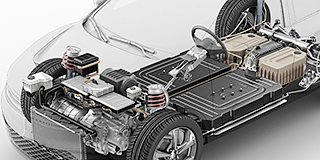 Autoteollisuus
Autoteollisuus
Autoteollisuus jatkaa innovatiivista kehitystään ja Mitutoyo tarjoaa edistyneitä tarkastus- ja skannausominaisuuksia auttamaan valmistajia saavuttamaan laadukkaan valmistusprosessin.
 Energiateollisuus
Energiateollisuus
Mitutoyon mittaus- ja analysointiratkaisut on suunniteltu auttamaan energianteollisuuden yrityksiä parantamaan luotettavuutta ja lisäämään laitteistojen käyttöaikaa.
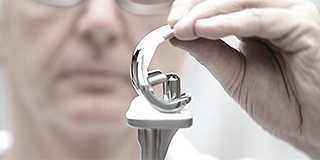 Lääketeollisuus
Lääketeollisuus
Potilaiden hyvinvoinnin suojelemiseksi lääketieteelliset sovellukset vaativat poikkeuksellista tarkkuutta. Lue lisää, että miten perusteellisesti testatut ratkaisut Mitutoyolta voivat auttaa lääketieteellisissä sovelluksissa.
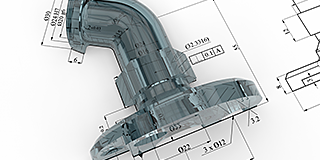 Valmistava teollisuus
Valmistava teollisuus
Varmista tarkkuus, korkea toistettavuus ja laadunvalvonnan prosessit Mitutoyon muodon- ja ympyrämäisyydenmittauskoneilla, koordinaattimittauskoneilla ja muilla mittausratkaisuilla.
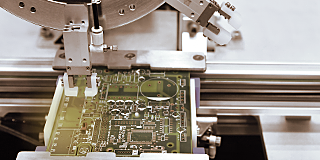 Elektroniikkateollisuus
Elektroniikkateollisuus
Mitutoyon kosketuksettomat mittausmenetelmät sekä videomittauskoneiden mittausratkaisut tuovat mikroskooppista tarkkuutta pienempiin ja haastavimpiin elektronisiin komponentteihin.
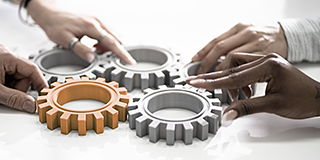 OEM-valmistus
OEM-valmistus
Mitutoyo OEM-tuotteet voivat korjata puuttuvan asiantuntemuksen tai resursseja toimittamalla sinulle arvostettuja metrologiatuotteitamme, jotka integroituvat saumattomasti tuotteisiisi.
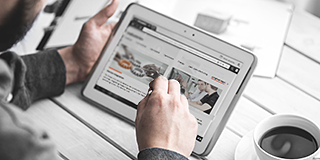 Asiakaskertomukset
Asiakaskertomukset
Yleiskuvan saamiseksi Mitutoyon kyvykkyyksistä ja luotettavuudesta ei ole parempaa paikkaa kuin upea kokoelma asiakaskertomuksia. (Case studies in English)
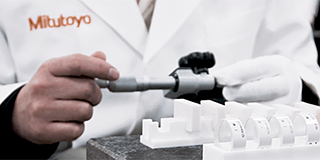 Akkreditoidut kalibrointipalvelut
Akkreditoidut kalibrointipalvelut
Mitutoyolta akkreditoidut kalibrointipalvelut CNC-toimisille mittauskoneille.
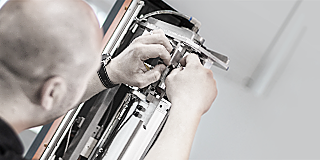 Kalibrointisopimukset mittauskoneille
Kalibrointisopimukset mittauskoneille
Varmista mittauskoneesi säännöllinen kalibrointi ja huolto kalibrointisopimuksella.
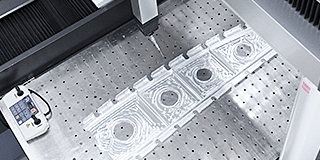 Mittaus- ja ohjelmointipalvelut
Mittaus- ja ohjelmointipalvelut
Mittauspalvelua sekä mitattavien kappaleiden ohjelmointia saatavilla asiantuntijapalveluina.
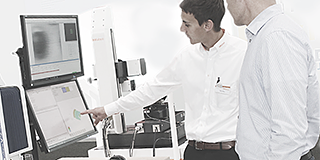 Tuotteiden esittelyt ja testimittaukset
Tuotteiden esittelyt ja testimittaukset
Paikan päällä näyttelytiloissamme tai esittely etänä ja saat ammattitaitoisen esittelyn tuotteistamme.
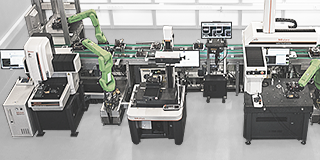 Mittauskoneet automaatiojärjestelmissä
Mittauskoneet automaatiojärjestelmissä
Muuta tehtaasi älykkääksi tehtaaksi Mitutoyon automaatioratkaisujen avulla.
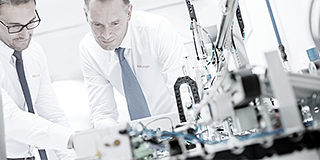 Mitutoyon räätälöidyt ratkaisut
Mitutoyon räätälöidyt ratkaisut
MGT:n ja KOMEG:n palveluiden avulla erikoislaitetoimitukset avaimet käteen -periaatteella.
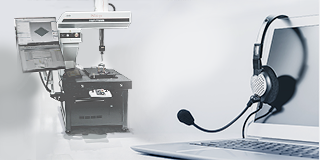 IT-tuki
IT-tuki
Täydellinen ja vaivaton asennus sekä integraatio IT-infrastruktuuriisi.
 Mitutoyo Japan Desk
Mitutoyo Japan Desk
The first stop for Japanese companies operating in Europe
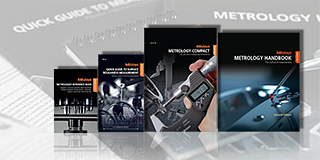 Oppaita ja postereita
Oppaita ja postereita
Täydellinen valinta työpaikalle tai luokkahuoneeseen. Mitutoyon julisteet ja oppimateriaalit ovat korvaamattomia apuvälineitä metrologian opiskelussa
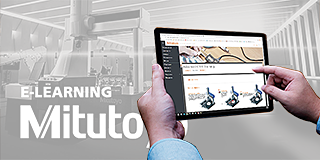 E-Learning
E-Learning
Hyödynnä Mitutoyon E-Learning koulutuskurssejamme, jotka tarjoavat mahdollisuuden lisätä metrologista osaamistasi sekä yritysten työntekijöiden ja organisaation tietämystä mittausteknologiasta.
 Opetusvideoita
Opetusvideoita
Jos etsit nopeaa tapaa oppia lisää mittauksesta, tutustu kattavaan opetusvideoiden tarjontaamme.
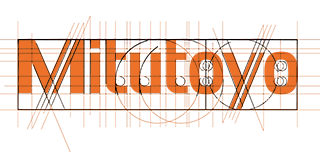 Tutustu Mitutoyoon
Tutustu Mitutoyoon
Mitutoyo on maailman suurimpia metrologia-alan toimijoita
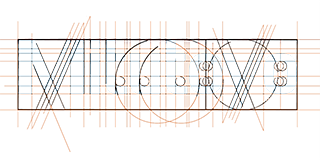 Uramahdollisuudet Mitutoyolla
Uramahdollisuudet Mitutoyolla
Lue lisää millaista on työskennellä Mitutoyolla ja mitkä voisivat olla seuraavat askeleet urasi aloittamiseksi täällä
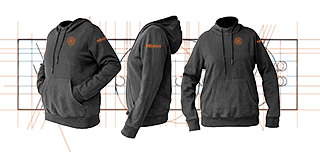 Merchandising
Merchandising
The popular destination for high-quality Mitutoyo apparel and more!
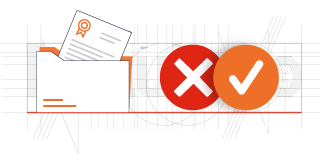 Sertifikaatit ja laillisuus
Sertifikaatit ja laillisuus
Tässä voit tutustua sertifikaatteihimme, akkreditointeihimme ja laillisuuteemme varmistaaksesi luotettavat ja varmennetut palvelut.
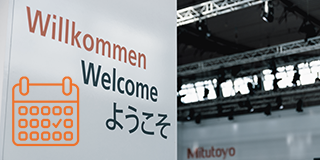 Tapahtumat
Tapahtumat
Pysy ajan tasalla tapahtumista ympäri Eurooppaa ja poikkea katsomaan, mitä uutta Mitutoyolta löytyy.
 Kampanjat ja promootiot
Kampanjat ja promootiot
Tarkista ja katso, että mitkä suosikkituotteesi ovat alennuksessa parhaaseen hintaan.
 Lehdistö - Press area
Lehdistö - Press area
Tarkista viimeisimmät uutiset, päivitykset ja resurssit.
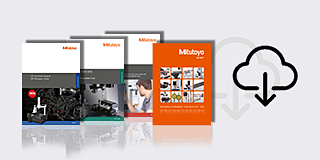 Tuote-esitteitä
Tuote-esitteitä
Katso ja lataa katalogimme, tuote-esitteet ja paljon muuta.
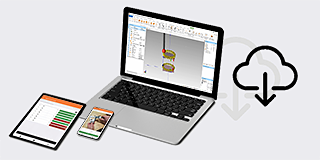 Ohjelmistot ja ajurit
Ohjelmistot ja ajurit
Lataa ohjelmistoja, päivityksiä ja ajureita helposti ja kätevästi.
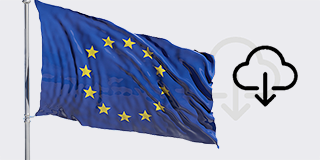 Vaatimustenmukaisuusvakuutukset
Vaatimustenmukaisuusvakuutukset
Täältä voit ladata täydet versiot EU:lle
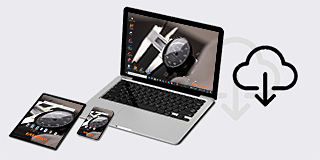 Ladattavia taustakuvia
Ladattavia taustakuvia
Lataa Mitutoyon virallisia taustakuvia tietokoneelle ja muihin laitteisiin ilmaiseksi
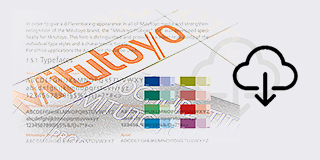 Mitutoyo brändi- ja viestintämateriaalit
Mitutoyo brändi- ja viestintämateriaalit
Resursseja Mitutoyon henkilöstölle ja ulkoisille toimittajille
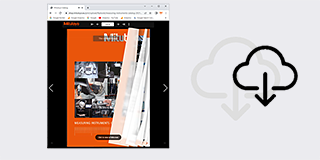 Verkkoluettelomme - Online Catalog
Verkkoluettelomme - Online Catalog
Tutustu laajaan tuotevalikoimaamme verkkoluettelossamme!
-
Tuotteet
- Takaisin Tuotteet
- Tuotteet
- Poimintoja tuotteistamme
- Tuotteita toimialoittain
-
Käsimittalaitteet
- Takaisin Käsimittalaitteet Kaikki: Käsimittalaitteet
- Työntömitat
-
Mikrometrit & rakennemikrometrit
- Takaisin Mikrometrit & rakennemikrometrit Mikrometrit & rakennemikrometrit
- Digitaaliset ja mekaaniset mikrometrit
- Mikrometrien varusteet
- Rakennemikrometrit
- Rakennemikrometrien varusteet
- Sisämittalaitteet
- Syvyysmittalaitteet
- Korkeusmittalaitteet
- Mittakellot & pikamittalaitteet
- Apuvälineet & tarvikkeet
-
Kalibrointilaitteet
- Takaisin Kalibrointilaitteet Kalibrointilaitteet
- Pystymalliset porrasmittapalat
- Porrasmittapalat
- Kalibrointilaitteet
- Mittapalat
-
Koordinaattimittauskoneet
- Takaisin Koordinaattimittauskoneet Kaikki: Koordinaattimittauskoneet
-
Pienet & keskikokoiset CMM:t
- Takaisin Pienet & keskikokoiset CMM:t Pienet & keskikokoiset CMM:t
- CRYSTA-Apex V - 500, 700, & 900 mallisarja
- CRYSTA-Apex V - 1200, 1600 & 2000 mallisarja
- CRYSTA-Apex EX mallisarja REVO-teknologialle
- STRATO-Active mallisarja
- STRATO-Apex - 500, 700, & 900 mallisarja
- STRATO-Apex - 1600 mallisarja
- LEGEX mallisarja
-
Tuotantotilojen ja -linjojen CMM:t
- Takaisin Tuotantotilojen ja -linjojen CMM:t Tuotantotilojen ja -linjojen CMM:t
- MACH Ko-ga-me
- MACH 3A 653
- MACH V 9106
- MiSTAR 555
-
Suuret CMM:t
- Takaisin Suuret CMM:t Suuret CMM:t
- CARB-mallisarja
-
Pyöröpöydät CMM
- Takaisin Pyöröpöydät CMM Pyöröpöydät CMM
- MRT240 pyöröpöytä
- MRT320 pyöröpöytä
-
Mittausanturit CMM
- Takaisin Mittausanturit CMM Mittausanturit CMM
- SurfaceMeasure
- REVO
- SP80
- TP7M
- PH20
-
Mittauskärjet
- Takaisin Mittauskärjet Mittauskärjet
- Mittakärkisarjat
- Suorat mittakärjet
- Timanttipinnoitetut mittakärjet
- Kalibrointikuula
- Työstökoneiden mittakärjet
- Ristikkokärjet
- Vaihdettavat ristikkokärjet
- Lieriömittakärjet
- Lautasmittakärjet
- Mittakärki - Tip Styli
- Mittakärkien jatkot
- Mittakärkien keskiöt
- Mittakärkien adapterit
- Mittakärkien nivelletyt adapterit
- Keskiöiden ruuvit
- Työkalut
- Mittakärkien puhdistusasema - StyliCleaner
- Kiinnitinjärjestelmät
-
Suojarakenteet CMM
- Takaisin Suojarakenteet CMM Suojarakenteet CMM
- Mittauskoneille suojarakenteet tuotantoon
-
Mittausohjelmistot CMM
- Takaisin Mittausohjelmistot CMM Mittausohjelmistot CMM
- MiCAT Planner
- MCOSMOS
- MAFIS Express
- MSURF
-
Videomittauskoneet
- Takaisin Videomittauskoneet Kaikki: Videomittauskoneet
-
Manuaalitoimiset 2D-videomittauskoneet
- Takaisin Manuaalitoimiset 2D-videomittauskoneet Manuaalitoimiset 2D-videomittauskoneet
- Quick Image
- Quick Imagen ohjelmisto
-
Manuaalitoimiset videomittauskoneet
- Takaisin Manuaalitoimiset videomittauskoneet Manuaalitoimiset videomittauskoneet
- Manuaalitoiminen Quick Scope
- Quick Scopen ohjelmisto
-
CNC-toimiset 3D-videomittauskoneet
- Takaisin CNC-toimiset 3D-videomittauskoneet CNC-toimiset 3D-videomittauskoneet
- Quick Vision ACTIVE
- Quick Vision APEX / HYPER
- Quick Vision ACCEL
- Quick Vision ULTRA
-
CNC-toimiset 3D-videomittauskoneet anturijärjestelmillä
- Takaisin CNC-toimiset 3D-videomittauskoneet anturijärjestelmillä CNC-toimiset 3D-videomittauskoneet anturijärjestelmillä
- Quick Vision Hybrid
- Quick Vision WLI
-
MiSCAN-videomittauskoneet
- Takaisin MiSCAN-videomittauskoneet MiSCAN-videomittauskoneet
- MiSCAN APEX 404
- MiSCAN HYPER 302
- MiSCAN HYPER 404
-
CNC-toimiset 3D-videomittauskoneet mikrogeometrioille
- Takaisin CNC-toimiset 3D-videomittauskoneet mikrogeometrioille CNC-toimiset 3D-videomittauskoneet mikrogeometrioille
- UMAP-videomittauskone
- UMAP-ohjelmisto
- Videomittauskoneiden ohjelmistot
- Videomittauskoneiden lisävarusteet
-
Optiset mittauslaitteet
- Takaisin Optiset mittauslaitteet Kaikki: Optiset mittauslaitteet
- Luupit
- Profiiliprojektorit
- Mittausmikroskoopit
-
Mikroskooppiyksiköt
- Takaisin Mikroskooppiyksiköt Mikroskooppiyksiköt
- Mikroskooppiyksiköt FS70-sarja
- Mikroskooppiyksiköt VMU-sarja
- Objektiivilinssit
- TAGLENS
- Valonlähteet
-
Muodonmittauskoneet
- Takaisin Muodonmittauskoneet Kaikki: Muodonmittauskoneet
- Pinnankarheuden mittauslaitteet
-
Muodonmittauskoneet
- Takaisin Muodonmittauskoneet Muodonmittauskoneet
- Contracer CV-2100
- Formtracer Avant FTA-C3000 and FTA-C4000
- Yhdistelmäkoneet pinnankarheus ja muodonmittaus
-
Ympyrämäisyydenmittauskoneet
- Takaisin Ympyrämäisyydenmittauskoneet Ympyrämäisyydenmittauskoneet
- Roundtest
- Roundtracer
-
Ohjelmistot FMI-koneille
- Takaisin Ohjelmistot FMI-koneille Ohjelmistot FMI-koneille
- Formtracepak
- Roundpak
-
Kovuudenmittauskoneet
- Takaisin Kovuudenmittauskoneet Kaikki: Kovuudenmittauskoneet
- Kannettavat mallit
- Yhdistelmälaitteet
-
Vickers-mittauskoneet
- Takaisin Vickers-mittauskoneet Vickers-mittauskoneet
- Vickersin mittauskoneet HV-110/120
-
Automaattiset Vickers-mittauskoneet
- Takaisin Automaattiset Vickers-mittauskoneet Automaattiset Vickers-mittauskoneet
- Automaattiset Micro-Vickersin mittauskoneet
- Automaattiset Vickersin mittauskoneet
-
Micro-Vickersin mittauskoneet
- Takaisin Micro-Vickersin mittauskoneet Micro-Vickersin mittauskoneet
- Micro-Vickersin kovuudenmittauskoneet HM-210/220
-
Kovuudenmittauskoneiden ohjelmistot
- Takaisin Kovuudenmittauskoneiden ohjelmistot Kovuudenmittauskoneiden ohjelmistot
- AVPAK-ohjelmisto
-
Referenssipalat ja painimet
- Takaisin Referenssipalat ja painimet Referenssipalat ja painimet
- Referenssipalat - Vickers
- Kovuudenmittauksen painimet ja varaosat
-
Anturijärjestelmät
- Takaisin Anturijärjestelmät Kaikki: Anturijärjestelmät
- Lineaarianturit
-
Matalan mittausvoiman anturit
- Takaisin Matalan mittausvoiman anturit Matalan mittausvoiman anturit
- Motorisoitu matalan mittausvoiman tarkkuusmittalaite LITEMATIC VL-50
-
Liityntä- ja väyläkomponentit
- Takaisin Liityntä- ja väyläkomponentit Liityntä- ja väyläkomponentit
- EJ-liityntäyksikkö ja väyläkomponentit lineaariantureille
- EC-liityntäyksikkö lineaariantureille
- EG-liityntäyksikkö lineaariantureille
- EB-liityntäyksikkö lineaariantureille
- EH-liityntäyksikkö lineaariantureille
- EV-liityntäyksikkö lineaariantureille
- Näyttöyksikkö EV-liityntäyksikölle
- Laser Scan Mikrometrit
-
Surface Measure - SM1008S
- Takaisin Surface Measure - SM1008S Surface Measure - SM1008S
- Linjalaseri Surface Measure
- Lisävarusteet
- Ohjelmisto anturien hallintaan
-
Pituudenmittausjärjestelmät
- Takaisin Pituudenmittausjärjestelmät Kaikki: Pituudenmittausjärjestelmät
-
DRO-pituudenmittausjärjestelmät Linear Scales & näyttöyksiköt
- Takaisin DRO-pituudenmittausjärjestelmät Linear Scales & näyttöyksiköt DRO-pituudenmittausjärjestelmät Linear Scales & näyttöyksiköt
- DRO Linear Scales AT103-sarja
- DRO Linear Scales AT103 - Korkean tarkkuuden asteikot
- DRO Linear Scales AT113-sarja
- DRO Linear Scales AT113 - Korkean tarkkuuden asteikot
- DRO Linear Scales AT116-sarja
- DRO ABS Linear Scales AT715-sarja
- KA-200 näyttöyksiköt Linear Scale -tuotteille
- NC-koneisiin Linear Scale -ratkaisut
-
Rakennetyöntömitat ja mitta-asteikot
- Takaisin Rakennetyöntömitat ja mitta-asteikot Rakennetyöntömitat ja mitta-asteikot
- Horizontal ABSOLUTE Scale jäähdytysnesteen kestävä malli IP66
- Horizontal ABSOLUTE Scale vakiomalli
- Horizontal ABSOLUTE Scale mittaussuunnan vaihtomahdollisuudella
- Horizontal ABSOLUTE Scale halkaisijatoiminnallisuudella
- Vertical ABSOLUTE Scale vakiomalli
- Vertical ABSOLUTE Scale mittaussuunnan vaihtomahdollisuudella
- Vertical ABSOLUTE Scale halkaisijatoiminnallisuudella
-
Mittaustiedon hallinta
- Takaisin Mittaustiedon hallinta Kaikki: Mittaustiedon hallinta
-
Mittaustiedon hallinnan ohjelmistot
- Takaisin Mittaustiedon hallinnan ohjelmistot Mittaustiedon hallinnan ohjelmistot
- MeasurLink 10
- USB-ITPAK
-
Miniprosessorit
- Takaisin Miniprosessorit Miniprosessorit
- Digimatic miniprosessori DP-1VA LOGGER
- Signaalikaapelit
-
Langaton mittaustiedon siirto
- Takaisin Langaton mittaustiedon siirto Langaton mittaustiedon siirto
- Langaton mittaustiedon siirto U-WAVE
- U-WAVE Bluetooth
- U-WAVE-T kaapelit ja lähettimet
- Rajapinnat ja muuntimet
-
Ajastin, toleranssinäyttölaite, ym.
- Takaisin Ajastin, toleranssinäyttölaite, ym. Ajastin, toleranssinäyttölaite, ym.
- Digimatic Timerbox
- Digimatic-dataloggeri
- Digimatic-jakolaite
- Digimatic-toleranssinäyttölaite
-
Ohjelmistot
- Takaisin Ohjelmistot Kaikki: Ohjelmistot
-
Koordinaattimittauskoneiden ohjelmistot
- Takaisin Koordinaattimittauskoneiden ohjelmistot Koordinaattimittauskoneiden ohjelmistot
- MiCAT Planner
- MCOSMOS
- MAFIS-Express
- MSURF
- Videomittauskoneiden ohjelmistot
-
FMI-koneiden ohjelmistot
- Takaisin FMI-koneiden ohjelmistot FMI-koneiden ohjelmistot
- Formtracepak
- Roundpak
- Kovuusmittakoneiden ohjelmistot
- Sensorpak-ohjelmisto
-
Mittaustiedon hallinnan ohjelmistot
- Takaisin Mittaustiedon hallinnan ohjelmistot Mittaustiedon hallinnan ohjelmistot
- Measurlink 10
- USB-ITPAK
- Toimialat
-
Palvelumme
- Takaisin Palvelumme
- Palvelumme
-
Koulutuspalvelut
- Takaisin Koulutuspalvelut
- Koulutuspalvelut
-
Akkreditoidut kalibrointipalvelut
- Takaisin Akkreditoidut kalibrointipalvelut
- Akkreditoidut kalibrointipalvelut
- Kalibrointisopimukset mittauskoneille
- Mittaus- ja ohjelmointipalvelut
- Tuotteiden esittelyt ja testimittaukset
- Mittauskoneet automaatiojärjestelmissä
- Mitutoyon räätälöidyt ratkaisut
- IT-tuki
- Mitutoyo Japan Desk
-
Koulutusmateriaali
- Takaisin Koulutusmateriaali
- Koulutusmateriaali
- Oppaita ja postereita
- E-Learning
- Opetusvideoita
- Tietoja meistä
-
Uutisia
- Takaisin Uutisia
- Uutisia
-
Tapahtumat
- Takaisin Tapahtumat
- Tapahtumat
-
Kampanjat ja promootiot
- Takaisin Kampanjat ja promootiot
- Kampanjat ja promootiot
- Lehdistö - Press area
- Lataukset
The Key to Reliable Measurement Results
Traceability
Traceability‘ is the key when it comes to calibration.
For calibrating measuring instruments or standards, which represent special values or limits, it is necessary to link/reference them to the physical base unit(s) they are meant for (e.g. the meter m).
More Details and Downloads
- To obtain these links, the national metrological institutes offer calibrations with their national primary standards, which are the definitive definition or realization of their unit of measure.
- Standards calibrated in this manner are so-called secondary standards.
- The third level of standard, a standard that is periodically calibrated against a secondary standard, is known as a working standard. Working standards are used for the calibration of commercial and industrial measurement equipment.
- For calibration, it is essential to use standards traceable to the primary standards, since we use the same units. To document this, the standards used with their valid calibration mark have to be stated in the calibration certificate.
A Quick Definition of
Calibration
Calibration is the process to determine deviations from a device or standard. This may include a validation of conformity (e.g. the product specifications) and to document the results, the method of calibration, and the standards used for the calibration a certificate of calibration will be created.
More Details and Downloads
- Calibration (and recalibration) of measurement devices and working standards in the industries is necessary to confirm the proper function and more importantly, ensure quality.
- To provide recognized calibrations, laboratories have to be at least accredited according to DIN EN ISO/IEC 17025
- Measurement to a consistently high level of accuracy can only be achieved if instruments are periodically calibrated against traceable standards
Doing the Math
Measurement Uncertainty
Measurements are always uncertain to a defined quantity.
There are existing several statistical methods to obtain the uncertainty according to the confidence you need. Usually, the measurement of uncertainty is given with a confidence of ≈95%.
More Details
-
By watching to chain of calibrations, from primary standard down to working standard [see ‘traceability’], the uncertainty of measurement will rise, because every further calibration contains the uncertainties of the standards used and in addition the uncertainty of the method of the calibration. The uncertainty of measurement in fact reflects the quality grade of the calibration.
-
For calibration purposes, you are always looking for better standards and/or better methods to push your uncertainty of measurement stated in the calibration certificate.
-
For customer's purposes, it is an economic matter of requirements vs. price. In reality, the majority of customers aren't familiar with the uncertainty of measurement. This results in decisions being made mostly by predetermined standards set up in contracts or business guidelines.
Confirming the Competences
Accreditation
Accreditations - the reliable instrument confirming competence.
Calibration laboratories may obtain accreditation by their national accreditation body, which is the DAkkS in the Federal Republic of Germany, the UKAS in the UK, and the RvA in the Netherlands for example.
More Details
-
An accreditation by these bodies confirms that organizations such as testing, inspection, and certification bodies can undertake their activities competently in accordance with internationally recognized standards and in line with the regulatory requirements. This establishes confidence in the important work of these independent conformity assessment bodies and their services in all sectors of the economy.
-
Also, accreditation ensures the international recognition of conformity assessments, contributing to free trade in Europe and around the world.
-
Actually, accredited calibrations had become more of interest because of contracts and guidelines between the industry and their suppliers. Especially the automotive industry demands ‘more trusted’ calibrations for their suppliers.
More and more customers seem to prefer accredited calibrations because of some kind of insecurity with proprietary calibration.
See here our certifications & accreditations page
Stay Tuned
Recommended Calibration Frequencies

A calibration interval is the period of time established for a test instrument to be recalibrated. Mitutoyo recommends recalibrating your instruments frequently to be confident they are performing the best and most accurate way possible.
| Mitutoyo Product | Tools for Technical Service / Workshop etc. | Tools / Standards for Calibration Laboratory | Recommended Regular Internal Checks |
|---|---|---|---|
| Micrometer | 1 Year | ||
| Bore Gauges / Holtest | 1 Year | ||
| Caliper | 1 Year | ||
| Dial and Digimatic/ Linear Gauges | 2 Years | ||
| Laser Scan Micrometer | 1 Year to 3 Years | 1 Year | 3 Months |
| Microscopes / Projectors | 1 Year to 2 Years | Regulary | |
| Checkmaster up to 1010 mm | 2 Years | 2 Years | |
| Checkmaster over 1010 mm from RvA | 2 Years | -- | |
| Checkmaster over 1010 mm | Initial Re-Calibration after 1 Year. Then every 2 Years. | 1 Year | |
| Glass Scales and Masks | 5 Years | 3 Years | |
| Gauge Blocks up to 100 mm | 4 Years | Initial Re-Calibration after 1.5 Years (over 15 mm). Then every 3 Years. | |
| Gauge Blocks over 100 mm | 3 Years | Initial Re-Calibration after 1.5 Years. Then every 3 Years. | |
| FMI Tools (X-Tools, Triangles, Square Blocks, Cylinders, Dumbbells, etc.) | 3 Years | 3 Years | |
| Reference Hemispheres | 3 Years | 5 Years | |
| Roughness Specimen | 1.5 Years in Workshop. 3 Years in Technical Service. | 5 Years | |
| Setting Rings, Pin Gauges | 3 Years | 3 Years | |
| Masterballs | 3 Years | 3 Years | |
| Dial Gauge Tester | 2 Years | 1 Year | 3 Months |
| Hardness Plates | 5 Years | 5 Years | |
| Thermometer | 1 Year | 2 Years | |
| Thermometer Pt 100 | 1 Year | 1 Year | |
| Electrical devices (Oscilloscopes, Multimeter, etc.) | 1 Year | 1 Year | |
| Granite Plates and Squares | 5 Years | 3 Years | |
| Universal Height Master | 3 Years | 2 Years | |
| Laser Interferometer | 2 Years | 2 Years | 3 Months |
| 3D Coordinate Measuring Machines | 1 Year | 1 Year | 3 Months |
| Gauge Block Tester | 1 Year | 1 Year | 3 Months |
| Roughness/Roundness/Length Measuring Machines | 1 Year | 1 Year | 3 Months |
| 2D / 3D Vision Measuring Machines | 1 Year | 1 Year | 3 Months |
In general for new items choose a shorter interval in the beginning. When you have results over a longer duration which you can compare you can adapt the interval.




